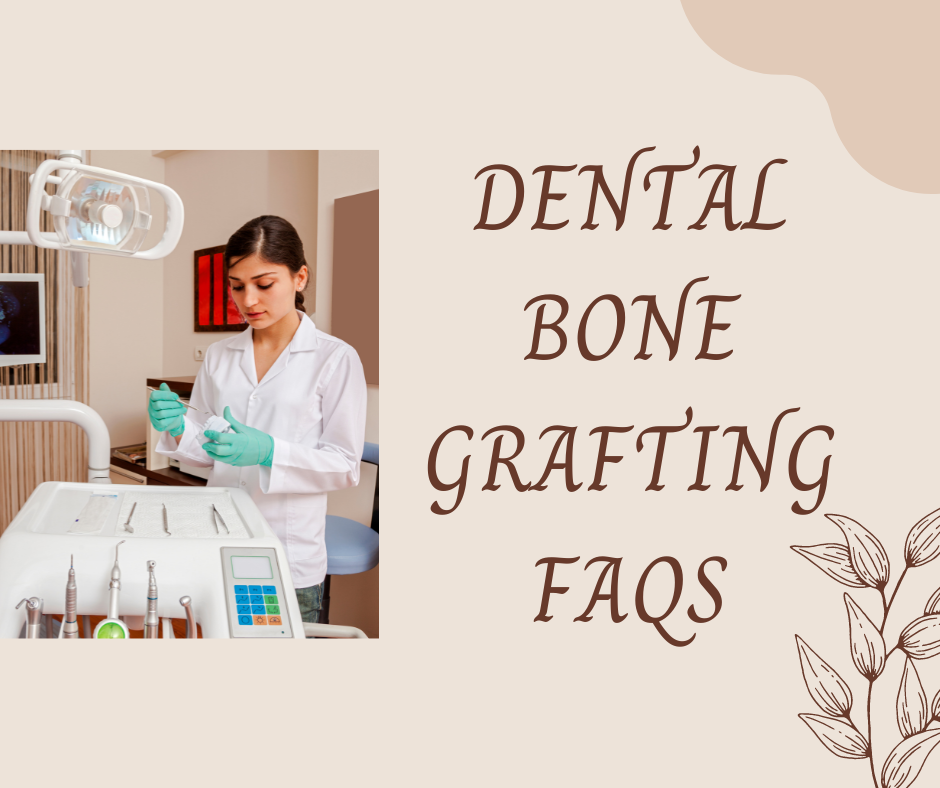Frequently Asked Questions (FAQs) About Dental Bone Grafting.
In this 6th and final part of the series, we discuss some critical Frequently Asked Questions ( Part 1: What is bone grafting, and how it works; Part 2: Who needs bone grafting in dentistry? Part 3. Different types of bone grafting materials; Part 4. Procedure for bone grafting; Part 5. Post-operative Care and Recovery ).

Bone grafting is a standard procedure in dentistry that can have significant benefits for those who need it. Here are the answers to some of the most frequently asked questions about bone grafting:
Q: What is bone grafting, and how does it work?
A: Bone grafting is a surgical procedure in which bone material is transplanted from one part of the body, a donor or a synthetic substitute, to another that requires more support. In dentistry, this usually means adding bone material to the jawbone to support the placement of dental implants. With time, the transplanted material fuses with the existing bone, strengthening it and making it more resistant to future bone loss.
Q: Who is a good candidate for dental bone grafting, and what are the benefits?
A: Patients who have lost some of their teeth and, as a result of this loss, have lost some of their jawbone density may be good candidates for bone grafting. The benefits of bone grafting include improved dental health through the restoration of jawbone mass, which can significantly improve the overall quality of life.
Q: What are the different types of dental bone grafting procedures, and how do they differ?
A: There are several types of bone grafting procedures, including autografts (using bone material from the patient’s own body), allografts (using bone material from a donor), and xenografts (using bone material from animals). Some more advanced options include stem cell therapy and growth factors to help regenerate the patient’s bone. These methods have unique advantages and disadvantages, and your dentist will help determine which is best for you.
Q: What should you expect during and after dental bone grafting surgery, and how can you ensure a successful recovery?
A: The dentist will use sedation and local anesthesia to ensure the patient is comfortable during surgery. After the procedure, the patient will be given instructions for post-operative care, including pain control medication, antibiotics for infection prevention, and possibly a special diet. Follow-up appointments will be scheduled to monitor the healing process.
Patients should follow their dentist’s instructions for post-operative care to ensure a successful recovery. Some of the most important things to do include keeping the surgical site clean, avoiding smoking, and avoiding any activity that may cause undue stress to the jawbone. With patience and care, the patient will enjoy the benefits of bone grafting and improved dental health.
In conclusion, bone grafting in dentistry is a necessary procedure that can drastically improve your dental health. Whether from a missing tooth or bone loss due to gum disease, bone grafting can restore your jawbone and provide a solid foundation for dental implants or other dental restorations. You can enjoy improved oral health and a more beautiful smile by working with a skilled dental professional and following the proper aftercare instructions. So, don’t hesitate to explore bone grafting options if you are experiencing dental problems – it can make all the difference in your long-term dental health.





